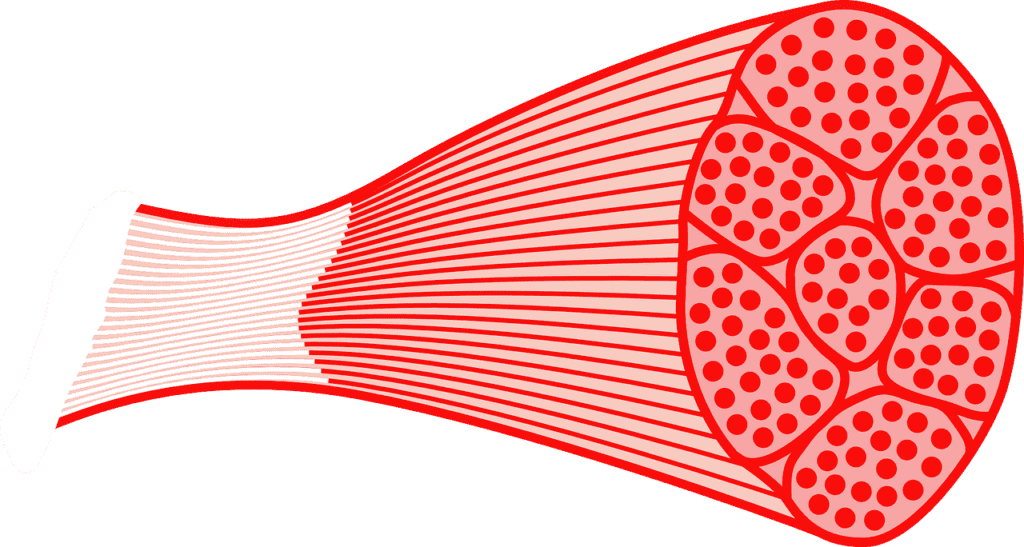Muscle Building 101: Workouts For Gaining Mass Effectively. So, you’ve set the goal of building muscle and finally achieving that strong, sculpted physique you’ve always dreamed of. Well, you’re in the right place! In this article, we will guide you through Muscle Building 101, providing you with effective workouts that will help you gain mass in the most efficient way possible. Say goodbye to endless hours at the gym without seeing results and let’s dive into a workout regimen that will bring you closer to your muscle-building goals.
Choosing the Right Exercises
Compound Exercises
When it comes to building muscle effectively, compound exercises should be the foundation of your workout routine. These exercises are multi-joint movements that work multiple muscle groups at once. They are incredibly efficient as they engage large muscle groups, allowing you to lift heavier weights and stimulate maximum muscle growth. Some of the most popular compound exercises include squats, deadlifts, bench press, and overhead press. By incorporating these exercises into your routine, you can target multiple muscle groups simultaneously and make the most out of your training sessions.
Isolation Exercises
While compound exercises are essential for overall muscle development, isolation exercises can help you target specific muscle groups and enhance muscle definition. These exercises focus on a single joint movement, isolating a particular muscle group and allowing for precise and targeted work. Common isolation exercises include bicep curls, tricep extensions, chest flyes, and leg extensions. By incorporating isolation exercises into your routine, you can address any lagging muscle groups and achieve a well-rounded physique.
Free Weights vs Machines
When it comes to choosing between free weights and machines, both have their advantages and should be used strategically in your workout program. Free weights, such as dumbbells and barbells, require more stabilization as you have to control the weight through space. This engages additional muscle groups and promotes functional strength. On the other hand, machines provide stability and guidance, making them suitable for beginners or those with injuries. They also allow for isolation work and precise muscle targeting. It is generally recommended to incorporate a mix of free weights and machines to maximize muscle growth and overall strength.
Designing Your Workout Program
Setting Your Goals
Before diving into your workout program, it’s crucial to set clear and realistic goals. Do you want to gain muscle mass, increase strength, or improve overall fitness? Setting specific goals will help you tailor your training program to align with your desired outcomes. Additionally, consider the time frame in which you aim to achieve these goals, as this will influence the intensity and frequency of your workouts.
Determining Training Frequency
How often you should work out depends on various factors, including your fitness level, goals, and recovery ability. Generally, beginners should start with three to four workouts per week, allowing for rest days in between. As you progress, you can increase the frequency to five or six days a week, targeting specific muscle groups on different days. However, always listen to your body and prioritize rest and recovery. Overtraining can lead to injury and hinder your progress.
Splitting Your Routine
To effectively target each muscle group and prevent overuse injuries, consider splitting your workout routine. Common splits include upper body and lower body splits or push and pull splits. By splitting your routine, you can dedicate more time and effort to each muscle group, ensuring they receive adequate stimulus and recovery. It’s important to find a split that works best for your schedule and allows for proper recovery between sessions.
Progressive Overload
Progressive overload is the key to building muscle effectively. It involves gradually increasing the demands placed on your muscles over time. This can be achieved by manipulating variables such as weight, repetitions, sets, and rest periods. By consistently challenging your muscles with increased resistance or intensity, you force them to adapt and grow stronger. Aim to gradually increase the weight you lift, the number of repetitions you perform, or decrease the rest time between sets to ensure continuous progress and stimulate muscle growth.

Warm-Up and Stretching
Importance of Warm-Up
Before diving into your workout, a proper warm-up is essential to prepare your body for the upcoming physical activity. A warm-up increases blood flow, raises your body temperature, and primes your muscles, joints, and nervous system for exercise. It helps prevent injury, improves performance, and ensures optimal muscle activation. A good warm-up should include dynamic movements that mimic the exercises you’ll be performing, gradually increasing in intensity.
Dynamic Stretching
Dynamic stretching involves moving your muscles and joints through a full range of motion to improve flexibility and prepare for the workout ahead. Examples of dynamic stretches include walking lunges, arm circles, and leg swings. Dynamic stretching helps improve mobility, enhance muscle coordination, and primes your body for movement.
Foam Rolling
Foam rolling, also known as self-myofascial release, is a technique that uses a foam roller to apply pressure to specific muscles, releasing tension and improving muscle elasticity. Foam rolling helps reduce muscle soreness, increase range of motion, and enhance blood flow to the muscles. It can be especially beneficial before a workout to target tight or overactive muscles.
Mobility Exercises
In addition to dynamic stretching and foam rolling, incorporating mobility exercises into your warm-up routine can improve joint mobility and enhance movement quality. Mobility exercises focus on improving the range of motion and function of specific joints, helping to prevent injuries and optimize performance. Examples of mobility exercises include hip circles, shoulder dislocations, and ankle mobilizations.
Building Strength with Compound Lifts
Squats
Squats are a foundational compound exercise that targets the lower body and engages multiple muscle groups, including the quadriceps, hamstrings, glutes, and core. They are incredibly effective for building lower body strength, improving overall athleticism, and promoting muscle growth throughout the entire body. Proper squat form is crucial to prevent injury and maximize results. Start with bodyweight squats and gradually progress to weighted squats as your strength increases.
Deadlifts
Deadlifts are a compound exercise that primarily targets the posterior chain, including the glutes, hamstrings, and lower back. They also engage the core muscles and work the upper back, making it a full-body exercise. Deadlifts are excellent for building overall strength, improving posture, and developing a strong back. It’s important to learn proper deadlift form and start with lighter weights before progressing to heavier loads.
Bench Press
The bench press is a classic compound exercise that primarily targets the chest, shoulders, and triceps. It is a staple in strength training and bodybuilding routines as it allows you to lift heavy weights and stimulate significant muscle growth in the upper body. When performing the bench press, ensure proper form and gradually increase the weight as your strength improves. Incorporating variations, such as incline or decline bench press, can further emphasize different areas of the chest.
Overhead Press
The overhead press, also known as the military press, is a compound exercise that primarily targets the shoulders and triceps. It is an excellent exercise for building upper body strength, improving shoulder stability, and enhancing overall shoulder development. Proper form and technique are essential to avoid injury and effectively engage the targeted muscles. Start with lighter weights and gradually increase the load as your strength grows.

Targeting Specific Muscle Groups with Isolation Exercises
Biceps and Triceps
Isolation exercises for the biceps and triceps can help you achieve well-defined and strong arms. Bicep curls, both with dumbbells and barbells, effectively isolate the bicep muscles, promoting growth and strength. For the triceps, exercises like tricep extensions and dips target the back of the arms and contribute to a more balanced upper body appearance. By incorporating these exercises into your routine, you can achieve the sculpted arms you desire.
Chest and Back
To build a strong and well-defined chest, exercises like chest flyes, dumbbell or barbell bench press, and push-ups can be highly effective. These exercises target the pectoral muscles from different angles, promoting muscle growth and enhancing chest development. Similarly, back exercises such as lat pulldowns, rows, and pull-ups engage the muscles of the upper back, including the lats and rhomboids, leading to a wider and more muscular appearance.
Shoulders and Lats
Isolation exercises for the shoulders and lats can help you develop a well-rounded and defined upper body. Shoulder exercises like lateral raises, front raises, and shoulder presses target the deltoid muscles and contribute to a broader and more sculpted shoulder appearance. In addition, exercises like pull-ups, lat pulldowns, and bent-over rows engage the latissimus dorsi muscles, promoting a wider and stronger back.
Legs and Glutes
To build strong and powerful legs, exercises like lunges, leg press, and leg extensions can be beneficial. These exercises target the quadriceps, hamstrings, and glutes, leading to overall leg development. Additionally, incorporating exercises like hip thrusts and glute bridges can help specifically target and strengthen the glute muscles. By incorporating a combination of compound and isolation exercises, you can achieve strong and well-defined legs and glutes.
Incorporating Supersets and Drop Sets
Supersets for Muscle Fatigue
Supersets involve performing two exercises back-to-back without rest. They are a great way to increase the intensity of your workouts and stimulate greater muscle fatigue. By pairing exercises that target different muscle groups, you can maximize your time in the gym and effectively train multiple areas in a shorter period. For example, you can pair bench press with bent-over rows or squats with shoulder press. Supersets not only enhance muscle endurance but also lead to a greater caloric burn, helping with overall weight loss.
Drop Sets for Intensity
Drop sets are an advanced training technique that involves performing a set of a specific exercise to failure and then immediately reducing the weight and continuing the set. This technique helps push your muscles to their limits and induces a greater metabolic stress response, promoting muscle growth and strength gains. By incorporating drop sets into your routine, you can challenge your muscles in a new way and break through plateaus.
Sample Superset and Drop Set Exercises
Here are a few examples of supersets and drop sets you can incorporate into your workout routine:
- Superset:
- Dumbbell bench press followed by bent-over rows
- Walking lunges followed by dumbbell shoulder presses
- Drop Set:
- Barbell bicep curls followed by barbell curls with reduced weight
- Leg press followed by leg press with reduced weight
By incorporating supersets and drop sets strategically into your workout program, you can increase the intensity and effectiveness of your training sessions.

Importance of Rest and Recovery
Understanding Muscle Repair and Growth
Rest and recovery play a crucial role in muscle repair and growth. During exercise, muscle fibers are broken down and undergo microtears. It is during rest periods that the body repairs these damaged muscle fibers, leading to muscle growth and increased strength. Without adequate rest, muscles cannot fully repair, which can hamper progress and increase the risk of injury.
Benefits of Sleep
Quality sleep is essential for optimal muscle recovery and growth. During sleep, the body releases growth hormone, which plays a key role in muscle repair and regeneration. Inadequate sleep can impair muscle recovery and hinder muscle growth. Aim for 7-9 hours of uninterrupted sleep per night to ensure proper recovery and maximize your muscle-building potential.
Rest Days and Active Recovery
In addition to getting enough sleep, incorporating rest days and active recovery into your week is vital for muscle repair and overall well-being. Rest days allow your muscles and central nervous system to recover from intense workouts. On these days, avoid strenuous activities and focus on relaxation and recovery techniques such as stretching, foam rolling, and light low-impact activities like walking or yoga.
Nutrition for Muscle Recovery
Proper nutrition is essential for muscle recovery and growth. Ensure you consume an adequate amount of protein to provide the building blocks for muscle repair and synthesis. Include a variety of nutrient-dense foods, such as lean meats, fish, eggs, dairy, legumes, and whole grains, to support overall health and recovery. Additionally, staying well-hydrated throughout the day is crucial for optimal muscle function and recovery.
Tracking Progress and Making Adjustments
Logging Workouts
Tracking your workouts is essential for monitoring progress and making adjustments to your training program. Keep a workout journal or use a fitness app to record your exercises, sets, reps, weights, and any notes or observations about your workouts. This allows you to track your strength gains, identify areas for improvement, and ensure progressive overload over time.
Measuring Strength and Size
In addition to logging workouts, measuring your strength and size regularly can help gauge progress and motivate you to keep pushing forward. Use measurements, such as bodyweight, body fat percentage, and various body circumferences, to track changes in body composition. Additionally, periodically test your strength by performing one-rep max tests for key compound exercises or by tracking the weight and repetitions you can perform at a given intensity.
Adapting the Program for Plateaus
Plateaus are a normal part of any fitness journey. When progress stalls, it’s important to make adjustments to your training program to continue making gains. Consider modifying variables such as exercise selection, volume, intensity, or adding new training techniques to challenge your muscles in a different way. You can also try incorporating advanced training methods like supersets or drop sets to break through plateaus and stimulate further muscle growth.
Avoiding Overtraining
While consistency is crucial for making progress, it’s important to strike a balance between training and recovery. Overtraining can lead to burnout, decreased performance, and increased risk of injury. Listen to your body’s signals and prioritize rest and recovery when needed. Be mindful of your training volume, intensity, and frequency, and adjust accordingly to prevent overtraining.

Supplements for Muscle Building
Protein Powders
Protein powders are a convenient and efficient way to increase your protein intake and support muscle repair and growth. They come in various forms, such as whey, casein, and plant-based proteins, and can be easily incorporated into your post-workout routine or consumed as a snack throughout the day. However, it’s important to remember that supplements should not replace whole food sources of protein, and they should be used as a complement to a well-balanced diet.
Creatine Monohydrate
Creatine monohydrate is a widely studied and effective supplement for enhancing strength and power. It helps increase the production of adenosine triphosphate (ATP), which is the primary energy source for muscle contractions. Creatine can improve muscular endurance, promote lean muscle mass gains, and enhance overall athletic performance. It’s recommended to consult with a healthcare professional before incorporating creatine into your supplement regimen.
Branched-Chain Amino Acids (BCAAs)
BCAAs are a group of essential amino acids – leucine, isoleucine, and valine – that play a vital role in muscle protein synthesis and recovery. Taking BCAA supplements during or after workouts can help reduce muscle soreness, enhance muscle repair, and promote muscle growth. However, it’s important to note that consuming adequate protein from whole food sources is generally sufficient for most individuals, and BCAAs may not be necessary if protein intake is already adequate.
Pre-Workout Supplements
Pre-workout supplements are designed to increase energy, focus, and muscular endurance during workouts. These supplements often contain ingredients such as caffeine, beta-alanine, and creatine, which can enhance performance and delay fatigue. However, it’s important to choose reputable brands and read the labels carefully, as some pre-workout supplements may contain excessive amounts of stimulants or unnecessary additives. Consult with a healthcare professional before adding pre-workout supplements to your routine.
Avoiding Common Mistakes
Neglecting Proper Form and Technique
Using correct form and technique is crucial for maximizing the effectiveness of each exercise and preventing injuries. Improper form can lead to poor muscle activation, imbalanced muscle development, and unnecessary strain on joints and connective tissues. Take the time to learn and practice proper form for each exercise, and consider consulting a qualified fitness professional for guidance.
Skipping Warm-Up and Stretching
Skipping the warm-up and stretching portion of your workout is a common mistake that can lead to decreased performance and a higher risk of injury. A proper warm-up prepares your body for the demands of exercise by increasing blood flow and warming up the muscles. Stretching, both dynamically and statically, helps improve flexibility and range of motion, aiding in exercise performance and reducing the risk of strains and sprains.
Not Adequately Resting
It can be tempting to push yourself to the limit and train intensely every day, but not allowing for adequate rest and recovery can hinder your progress. Rest days are crucial for muscle repair and growth, and they allow your body to adapt to the demands of exercise. Ignoring the importance of r

est can lead to overtraining, increased risk of injury, and a plateau in your fitness journey.
Ignoring Nutrition and Hydration
Proper nutrition and hydration are essential for supporting muscle growth, recovery, and overall health. Ignoring the importance of a well-balanced diet with adequate protein, carbohydrates, and healthy fats can hinder your progress and limit muscle growth. Additionally, staying hydrated throughout the day is vital for optimal muscle function and recovery. Aim to consume a variety of nutrient-dense foods and drink enough water to support your training and muscle-building goals.
